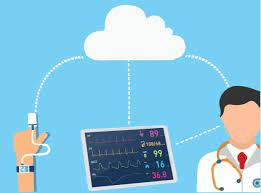How Remote Patient Monitoring Insurance Can Support Your Practice
Remote Patient Monitoring (RPM) is revolutionizing healthcare, giving patients and providers a way to stay connected beyond the four walls of a clinic. But did you know that insurance coverage for RPM can directly benefit your practice? With streamlined workflows and financial support, remote patient monitoring insurance policies could be the key to elevating your patient care and practice efficiency.
This blog dives into how remote patient monitoring insurance works and why it’s supporting practices to deliver effective healthcare.
What is Remote Patient Monitoring Insurance?
Remote Patient Monitoring insurance refers to reimbursement policies that cover the deployment and use of RPM technologies like wearable devices, remote sensors, and patient apps. Insurers, including government programs and private companies, understand the value of RPM in reducing hospital visits, managing chronic diseases, and improving outcomes. With growing technological adoption, these insurance frameworks are now becoming a vital aspect of healthcare delivery.
How Insurance Coverage Benefits Your Practice
1. Financial Reimbursements for RPM Services
Insurance programs often reimburse healthcare providers for offering remote patient monitoring services based on Medicare’s CPT codes or other regional regulations. These codes allow you to bill for device setup, patient data monitoring, and clinical decision-making consultations. By implementing RPM with insurance support, you can create an additional revenue stream for your practice while focusing on enhanced patient care.
2. Improved Patient Retention
When patients know their insurance helps cover RPM services, they are more likely to stay connected with their providers. This fosters trust, improves compliance with treatment plans, and builds longer-term relationships.
3. Efficient Chronic Disease Management
Chronic diseases like diabetes and hypertension are on the rise, and RPM is often used to manage them remotely. With insurance programs covering data analysis and teleconsultations, there’s less barrier to care for patients. For clinics, this means providing consistent care without requiring constant clinic visits.
4. Better Healthcare Outcomes
RPM-supported insurance ultimately focuses on efficiency and quality outcomes. From reducing hospital readmissions to early interventions through monitored data, insurance covers tools and services that prioritize the patient’s health.
The Numbers Speak for Themselves
Recent data from health organizations reveals rapid adoption of RPM. Over 23 million patients in the U.S. are already monitored remotely for chronic diseases, and providers integrating RPM programs are seeing higher patient satisfaction rates. With an estimated 129% increase in the use of RPM devices by 2028, robust insurance support may become even more vital for healthcare providers.
Take Practical Steps to Leverage RPM Insurance
Adopting RPM with proper insurance coverage isn’t just about revenue; it’s about delivering innovative and consistent patient care. Stay updated on reimbursement policies and ensure your practice complies with billing guidelines to make the most of this opportunity.
Remote Patient Monitoring insurance isn’t just supporting patients; it’s boosting the potential of healthcare practices across the board.

